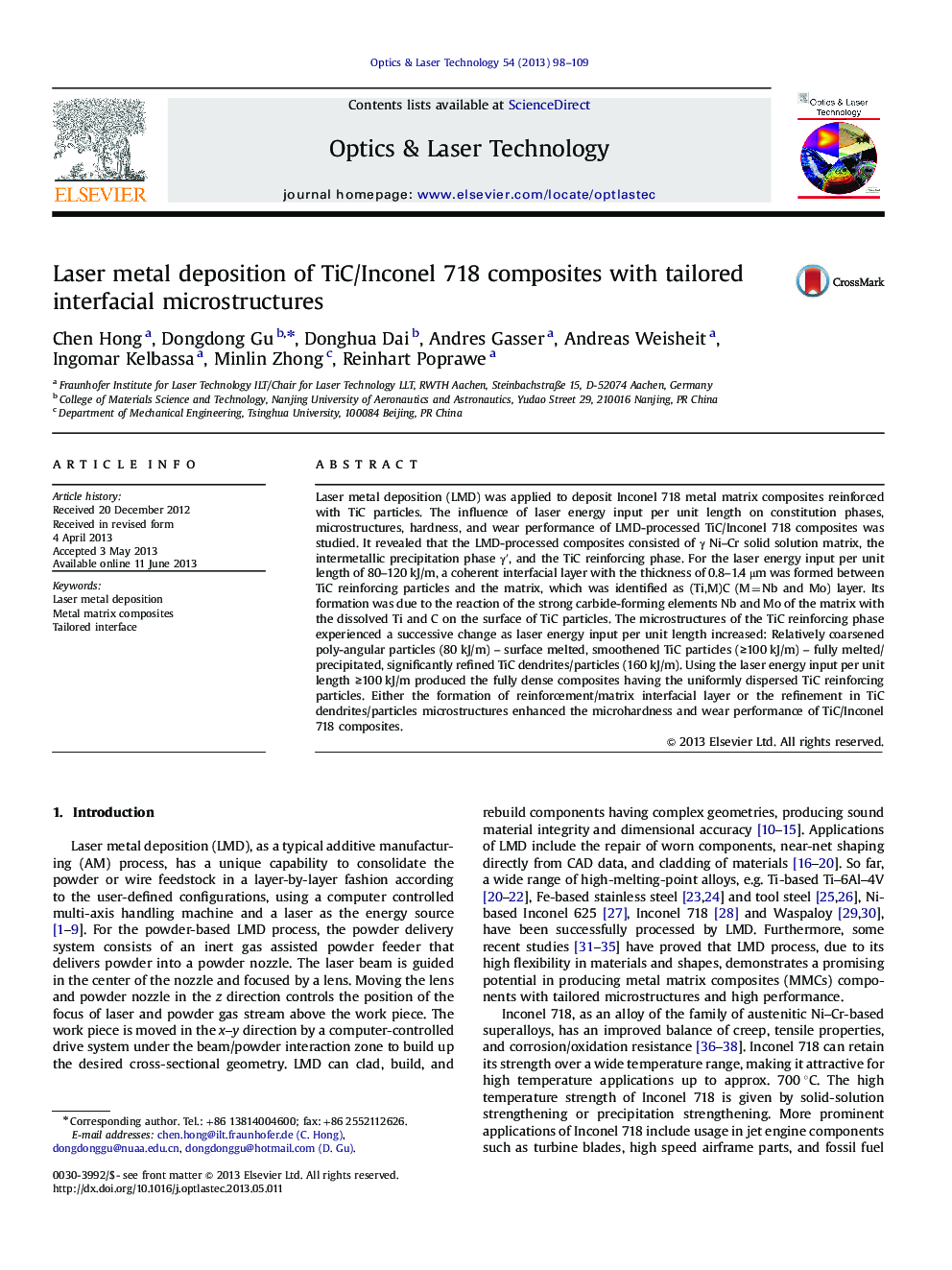| Article ID | Journal | Published Year | Pages | File Type |
|---|---|---|---|---|
| 7130766 | Optics & Laser Technology | 2013 | 12 Pages |
Abstract
Laser metal deposition (LMD) was applied to deposit Inconel 718 metal matrix composites reinforced with TiC particles. The influence of laser energy input per unit length on constitution phases, microstructures, hardness, and wear performance of LMD-processed TiC/Inconel 718 composites was studied. It revealed that the LMD-processed composites consisted of γ Ni-Cr solid solution matrix, the intermetallic precipitation phase γâ², and the TiC reinforcing phase. For the laser energy input per unit length of 80-120 kJ/m, a coherent interfacial layer with the thickness of 0.8-1.4 μm was formed between TiC reinforcing particles and the matrix, which was identified as (Ti,M)C (M=Nb and Mo) layer. Its formation was due to the reaction of the strong carbide-forming elements Nb and Mo of the matrix with the dissolved Ti and C on the surface of TiC particles. The microstructures of the TiC reinforcing phase experienced a successive change as laser energy input per unit length increased: Relatively coarsened poly-angular particles (80 kJ/m) - surface melted, smoothened TiC particles (â¥100 kJ/m) - fully melted/precipitated, significantly refined TiC dendrites/particles (160 kJ/m). Using the laser energy input per unit length â¥100 kJ/m produced the fully dense composites having the uniformly dispersed TiC reinforcing particles. Either the formation of reinforcement/matrix interfacial layer or the refinement in TiC dendrites/particles microstructures enhanced the microhardness and wear performance of TiC/Inconel 718 composites.
Related Topics
Physical Sciences and Engineering
Engineering
Electrical and Electronic Engineering
Authors
Chen Hong, Dongdong Gu, Donghua Dai, Andres Gasser, Andreas Weisheit, Ingomar Kelbassa, Minlin Zhong, Reinhart Poprawe,
